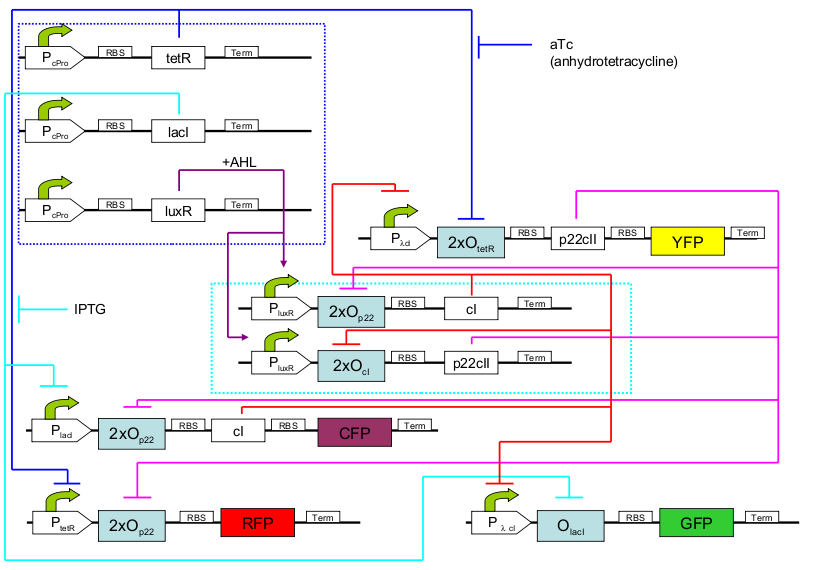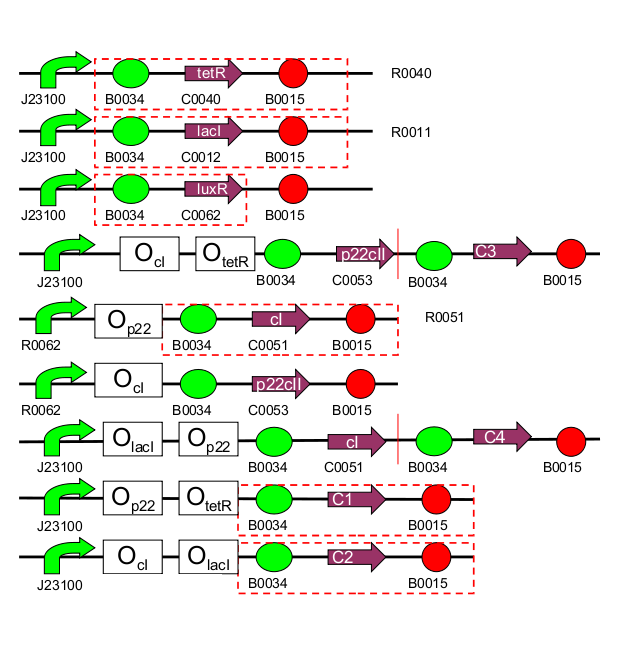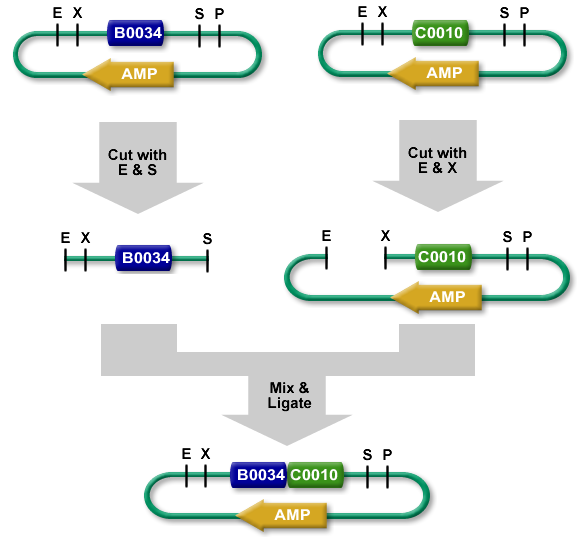ETHZ/Biology
From 2007.igem.org
(Difference between revisions)
Stefan Luzi (Talk | contribs) |
Stefan Luzi (Talk | contribs) |
||
| Line 20: | Line 20: | ||
|- | |- | ||
! 2 | ! 2 | ||
| - | | LacI production (constitutive part of system) | + | | [http://partsregistry.org/Part:BBa_I739002 LacI production] (constitutive part of system) |
|- | |- | ||
! 3 | ! 3 | ||
Revision as of 21:01, 29 September 2007

.:: Introduction ::.
Our aim is to engineer a biological system which exhibits learning behavior, i.e. a system which can alter its behavior according to external stimuli.
We are interested in this as learning plays a major role in living organisms and machine learning has numerous applications in engineering - it is therefore a great interface between engineering and biology, with possible applications as exciting as biological memories. In our project we are constructing an E. coli strain which with the help of an external chemical signal (AHL) is able to remember which of the two chemical substances (aTc and IPTG) it has previously been exposed to. The system architecture is based on a toggle switch consisting of different repressor and activator proteins synthesized from promoters which subject to two different regulations.In the first operation phase (learning), the system is exposed to one of the two chemicals (aTC and IPTG) and AHL is added, causing a steady system behavior. In the second phase (remembering), the chemicals are removed, but AHL allows the system to still maintain its state.
Finally, in the final phase (recognition), the system is exposed to any of the two chemicals again. Its response, reported with 4 fluorescent proteins, differs according not only to which chemical the system is exposed to now, but also to if this chemical is the same that the system has already experienced (learning effect). Therefore, 4 possible system responses are possible: now exposed to aTc and have seen it before/ now exposed to aTc and have not seen it before/ now exposed to IPTG and have seen it before/ now exposed to IPTG and have not seen it before.The systems consists of 11 parts that can be synthesized independently:
| 1 | [http://partsregistry.org/Part:BBa_I739001 TetR production] (constitutive part of system) |
|---|---|
| 2 | [http://partsregistry.org/Part:BBa_I739002 LacI production] (constitutive part of system) |
| 3 | LuxR production(constitutive part of system) |
| 4 | 1st half of p22/YFP production (outer part of system, reporting) |
| 5 | 2nd half of p22/YFP production (outer part of system, reporting) |
| 6 | CI production (inner part of system) |
| 7 | p22 production (inner part of system) |
| 8 | 1st half of CI/CFP production (outer part of system, reporting) |
| 9 | 2nd half of CI/CFP production (outer part of system, reporting) |
| 10 | RFP production (reporting) |
| 11 | GFP production (reporting) |
Three plasmids are used to house the above DNA parts, as can be seen from the following table:
| plasmid | resistance | copy type | contents | comments |
|---|---|---|---|---|
| pbr322 | ampicillin | medium | 1,2,3 | constitutive part |
| pck01 | chloramphenicol | low | 4,5,8,9 | outer part |
| pacyc177 | kanamycin | low | 6,7,10,11 | inner part, reporting |
.:: Experiments ::.
.:: References ::.
[1] Standard Assembly Process, http://partsregistry.org/Assembly:Standard_assembly
.:: To Do ::.
- Katerina: 1. Number system parts on both figures for easier reference.
- Katerina: 2. Add more info on all system parts and link to the ones existing in the registry. Write info on the ones that didn't exist in the registry (with detailed info such as addition of bp's as Christian and Sven had done).
- Katerina: 3. Add cloning plan. (Christos: Maybe the details will be at the team note's?)


